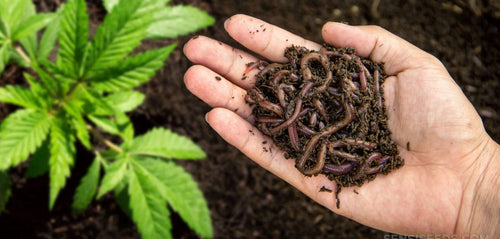#148: A Senior’s Guide to Cannabis: Safe, Smart, and Effective Use After 55
#148: A Senior’s Guide to Cannabis: Safe, Smart, and Effective Use After 55
Did you know that one in four Canadians aged 55 to 64 now use cannabis? For those over 65, that figure is 7%, making seniors the fastest-growing demographic of cannabis consumers in Canada. If you're in that age group and curious about cannabis but not sure where to begin, you're not alone.
Maybe your arthritis pain isn't responding to traditional medications anymore. Perhaps you're tired of prescription sleep aids leaving you groggy the next morning. Or maybe you've heard friends talking about how cannabis helped them manage anxiety or chronic pain. Whatever brought you here, the good news is that cannabis can be a safe and effective option for older adults when used properly.
The importance of age-appropriate dosing

Your body handles substances differently at 65 than it did at 25. As we age, our metabolism slows down, which means cannabis stays in our system longer. This isn't necessarily bad news (as it often means you need less to feel the same effects) but it does mean you need to be more careful about dosing.
Seniors are also more likely to be taking multiple medications, which can interact with cannabis. Your liver processes drugs more slowly, and your nervous system becomes more sensitive to substances. These changes mean that what works for your child might be too much for you.
Health Canada recognizes these differences and specifically advises that adults over 55 should "start low, go slow" when it comes to cannabis. This means beginning with the smallest possible dose and waiting to see how it affects you before taking more.
Research from Canadian emergency departments shows that cannabis-related visits among seniors have tripled since legalization. But most of these incidents were preventable with proper dosing and education.
How seniors are using cannabis to feel better
Canadian seniors are turning to cannabis for very practical reasons. According to Health Canada research, two-thirds of older adult cannabis users are seeking relief for physical or mental health conditions. The most common reasons include:
Chronic pain: Whether it's arthritis, back pain, or nerve pain, cannabis can offer relief when other medications fall short. Many seniors report being able to reduce their reliance on NSAIDs or opioids.
Sleep issues: Cannabis can help you fall asleep faster and stay asleep longer without the morning grogginess associated with prescription sleep aids.
Anxiety and stress: Lower doses of CBD-rich products can help manage anxiety without making you feel "high."
Appetite and nausea: Cannabis has been used for decades to help cancer patients, but it can also help seniors dealing with decreased appetite or digestive issues.
Inflammation: Conditions like arthritis involve inflammation, and cannabis has natural anti-inflammatory properties that may provide relief.
Choosing the right cannabis form
Not all consumption methods are right for all seniors. It's important to understand the different options available and determine what works best for your individual needs. Here's what you need to know about each option:
Oils and tinctures are often the best starting point for seniors. They offer precise dosing control and can be taken orally or added to food or drinks. Effects typically begin within 15-30 minutes and can last 2-4 hours. Most importantly, they don't involve smoking or vaping.
Edibles like gummies or capsules are convenient and discreet, but they take 30 minutes to 2 hours to work and can last 4-8 hours. Start with no more than 2.5mg of THC and wait at least 2 hours before taking more. Many accidental overdoses happen because people get impatient waiting for the effects.
Topicals like creams and balms can provide localized relief for sore joints or muscles without any mental effects. They're perfect if you want pain relief but need to stay completely clear-headed.
Avoid Smoking and Vaping if you have any lung or heart conditions. Although smoking and vaping deliver the fastest effects, they also come with potential risks to your respiratory system.
Finding your ideal cannabis dose
Canadian healthcare experts recommend specific dosing protocols for older adults. Here's an overview of the general guidelines:
CBD Products: Start with 2-5mg once daily, taken in the evening. You can increase by 5mg every few days until you find relief, up to a maximum of 40mg daily.
THC Products: Start with just 1-2.5mg once daily, preferably at bedtime. Only increase by 1mg every week, and don't exceed 10mg daily without medical supervision.
Balanced THC:CBD Products: These often work best for pain and sleep. Start with 1-2.5mg of each compound and increase slowly.
Remember: There's no rush. Take your time finding the right dose. Keep a simple diary noting when you take cannabis, how much, and how it makes you feel. This information will be valuable when talking to your doctor.
When cannabis and prescriptions don’t mix
Cannabis can interact with several medications commonly prescribed to seniors. Be especially careful if you're taking:

• Blood thinners like warfarin (cannabis can increase bleeding risk)
• Heart medications (cannabis can affect blood pressure and heart rhythm)
• Sedatives or sleep aids (combining these with cannabis can be dangerous)
• Seizure medications (cannabis may reduce their effectiveness)
• Pain medications (effects may be amplified)
Never stop or reduce prescription medications without talking to your doctor first, even if cannabis is helping your symptoms. Cannabis is generally well-tolerated by older adults, but watch for these warning signs:
Stop immediately and call your health practitioner if you experience:
• Chest pain or irregular heartbeat
• Severe dizziness or confusion
• Hallucinations or paranoia
• Trouble breathing
• Severe headache
Common side effects that usually improve with dose adjustment:
• Mild dizziness
• Dry mouth
• Slight drowsiness
• Changes in appetite
Key takeaways
Cannabis can be a powerful support for managing certain symptoms and enhancing quality of life, particularly for older adults. Take your time, ask questions, and be open to adjusting your approach. With proper education and guidance, seniors can find relief from chronic pain, insomnia, anxiety, and other age-related conditions through cannabis, often avoiding the harsh side effects of conventional pharmaceuticals.
Back to all posts










